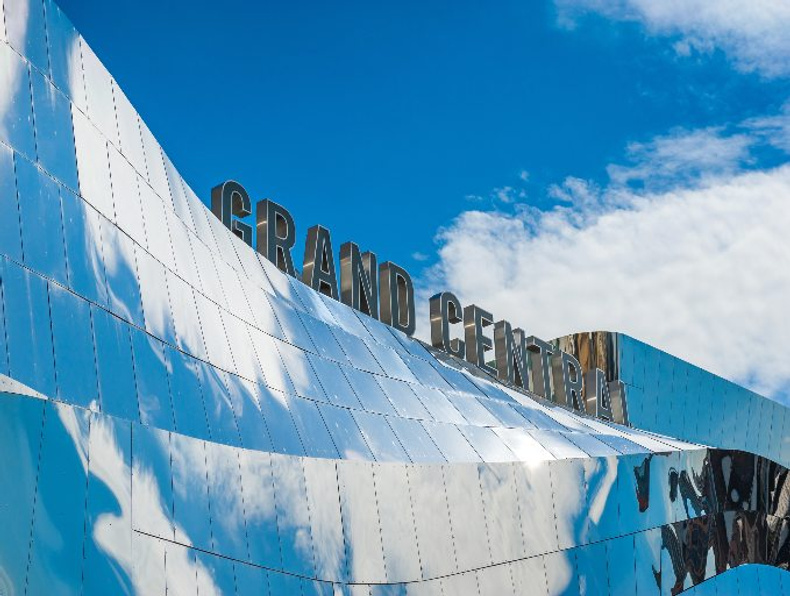Exhibition celebrates 75 years since India partition

An exhibition to commemorate 75 years since the partition of India will be on display at Birmingham New Street Station this month.
Named as 'Children of the Railway ', the exhibition is produced by historians at Aston University in association with the UK's leading British Asian web magazine DESIblitz.
It is open now and runs until 25 September.
The exhibition aims to tell the story of the division of the Indian Subcontinent in 1947 into two countries, presently known as India and Pakistan. At least 14 million people journeyed across this newly built border by train in the space of a few months in what is still known as the largest mass migration event in history. The estimated death toll of the partition ranges from 200,000 to two million.
Using first-hand oral testimonies from the DESIblitz film, The Reality of Partition, the exhibition will tell the stories of ordinary people whose lives were uprooted and whose communities were split.
One will be Dr Riaz Farooq, a principal examiner and language specialist (Urdu) living in the West Midlands. He was born in Jalandhar, India, on March 19, 1947, just months prior to the India and Pakistan partition. After crossing the border, his family eventually settled in Karachi, Pakistan, where he spent most of his younger life before arriving in the UK in May 1971.
The exhibition also places partition in the wider context of world affairs, as the British Empire slowly began to be dismantled and the Cold War began.
The exhibition will be officially opened at 18:00 hrs on Tuesday 6 September in the presence of the Lord Mayor of Birmingham, Cllr Maureen Cornish and Aston University Vice-Chancellor, Professor Aleks Subic.
Joining them will be Hasan Patel of Citizens UK, Aston University 's strategic partner for regional and civic engagement, who has collaborated in the production of the exhibition, alongside prominent members of the community, Rajinder Mann OBE and Dr Nasir Awan MBE, and Indi Deol, director of DESIblitz.
Dr Brian Sudlow, lecturer in history at Aston University, said: “The partition of India in 1947 was a world-changing historical event that reshaped a major part of Asia and moved the British Empire significantly closer to its final demise. Yet its consequences also changed the face of Birmingham and the West Midlands, which over the following decades saw the arrival of many migrants from India, Pakistan, and later Bangladesh.
“We teach about the partition on our global history course, but in fact, these events are the family history of so many of our students.
“I 'm really excited about the exhibition at Birmingham New Street. It gives us a chance to tell a story that many British people simply do not know: a story that is linked to the British Empire but also to the railways which had a major role in moving people around the Indian subcontinent.
“Most importantly, it is an occasion to commemorate an event that, for good and for ill, has shaped the personal histories of so many people in the West Midlands. Partition was a moment of liberation, but it was also a moment of tragic suffering and loss.
“This exhibition will set the partition of India in the context of immense global changes following the Second World War. Yet it will also showcase the personal memories of individuals who later came to live in the Birmingham areas. ”
Indi Deol, managing director at DESIblitz, said: “Real-life memories and personal stories of people from across Birmingham and the Black Country affected by the events of the partition of India in 1947 have been captured by DESIblitz.
“The project resulted in a specially-curated film, The Reality of Partition, in which first-hand accounts of people 's experiences are shared, alongside archive footage of events recorded at the time. Illustrated with animations, the film illuminates these powerful voices that reflect the personal reality of partition.
“Some of these personal testimonies are included in the exhibition and visitors can watch clips from the film by scanning the QR codes on the exhibition panels.
“Sometimes it can be pretty hard to visualise exactly what had been endured during the partition of India, even with first-hand accounts from that period. To mark the 75th anniversary of the partition we have enhanced some parts of the documentary with 3D animated scenes of memories which we are excited to reveal during this new exhibition. ”
To find out more about the exhibition, click here.
